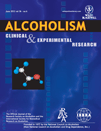
Alcohol consumption is prevalent in late adolescence; however, little is known about its effect on sleep in this group. In mature adults, alcohol decreases sleep onset latency (SOL) and sleep efficiency (SE) and increases wake after sleep onset (WASO). It also increases slow wave sleep (SWS) and decreases rapid eye movement (REM) sleep in the first half of the night, with the inverse occurring in the second half. Alcohol's effect on sleep during late adolescence is of interest given that this age group shows both dramatic increases in alcohol consumption and significant developmental changes in the central nervous system. This study examined the effect of alcohol on sleep architecture in women and men aged 18 to 21 years and whether previously reported sleep architecture effects may have been as an artificial result of changes to sleep cycle length.
Twenty-four (12 women) healthy 18- to 21-year-old light social drinkers (19.1 ± 1.0 years) underwent 2 conditions: presleep alcohol (target breath alcohol concentration [BAC] 0.10%) and placebo-administered under controlled conditions, followed by standard polysomnography.
In the alcohol condition, mean BAC at lights out was 0.084 ± 0.016%. Time in bed, total sleep time, and SOL (all p > 0.05) did not differ between conditions. However, there was less REM (p = 0.011) and more stage-2 sleep (p = 0.035) in the alcohol condition. Further, alcohol increased SWS (p = 0.02) and decreased REM sleep (p < 0.001) in the first half of the night and disrupted sleep in the second half, with increased WASO (interaction: p = 0.034), and decreased SE (p = 0.04) and SWS (p = 0.01) and no REM sleep rebound in the second half of the night (p = 0.262). Additionally, alcohol had no effect on sleep cycle length (p = 0.598).
The results were broadly consistent with the adult literature with the novel extension that half night sleep architecture effects could not be attributed to changes in sleep cycle length. However, alcohol did not reduce SOL, or result in a REM rebound following reduced REM in the first half of the night. The results suggest that the effects of alcohol on sleep are modified by sleep's prevailing developmental stage.
Read Full Abstract
Request Reprint E-Mail: cln@unimelb.edu.au
Read Full Abstract
Request Reprint E-Mail: cln@unimelb.edu.au